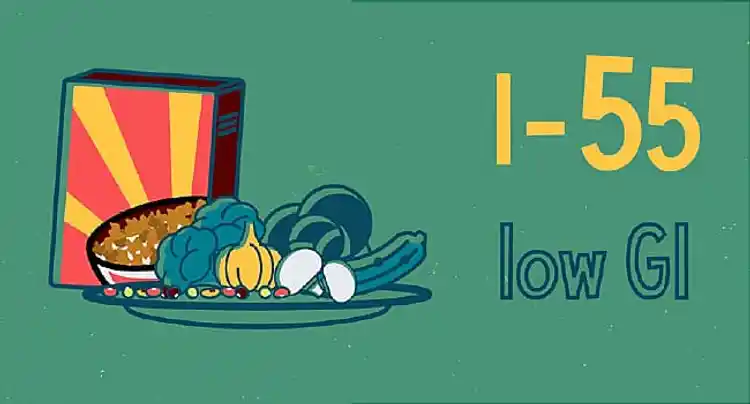What Is the Glycemic Index?

Hide Video Transcript
Video Transcript
The glycemic index, or GI, is a scale that estimates how different types of carbohydrates affect your blood sugar.
If you have diabetes, it can be a helpful tool for planning meals and guiding your food choices.
Here's how it works.
Foods that contain carbs are assigned a number from 1 to 100.
The higher the number, the more it can increase your blood sugar.
Foods with a number between 1 and 55 are considered "low GI," like beans, non-starchy vegetables, and bran cereal.
From 56 to 69, foods are "medium GI," like corn, bananas, pineapple, and whole wheat bread.
And between 60 and 100, foods are "high GI," like white rice, white bread, and potatoes.
Choosing low-GI foods over high-GI foods, like brown rice instead of white rice, can help you manage your blood sugar.
But GI isn't the only thing to watch.
Calories, fat, fiber, vitamins, and other nutrients should also be considered.
The amount you eat also affects how much your blood sugar goes up. So be sure to pay attention to your portions.
If you have diabetes, it can be a helpful tool for planning meals and guiding your food choices.
Here's how it works.
Foods that contain carbs are assigned a number from 1 to 100.
The higher the number, the more it can increase your blood sugar.
Foods with a number between 1 and 55 are considered "low GI," like beans, non-starchy vegetables, and bran cereal.
From 56 to 69, foods are "medium GI," like corn, bananas, pineapple, and whole wheat bread.
And between 60 and 100, foods are "high GI," like white rice, white bread, and potatoes.
Choosing low-GI foods over high-GI foods, like brown rice instead of white rice, can help you manage your blood sugar.
But GI isn't the only thing to watch.
Calories, fat, fiber, vitamins, and other nutrients should also be considered.
The amount you eat also affects how much your blood sugar goes up. So be sure to pay attention to your portions.
